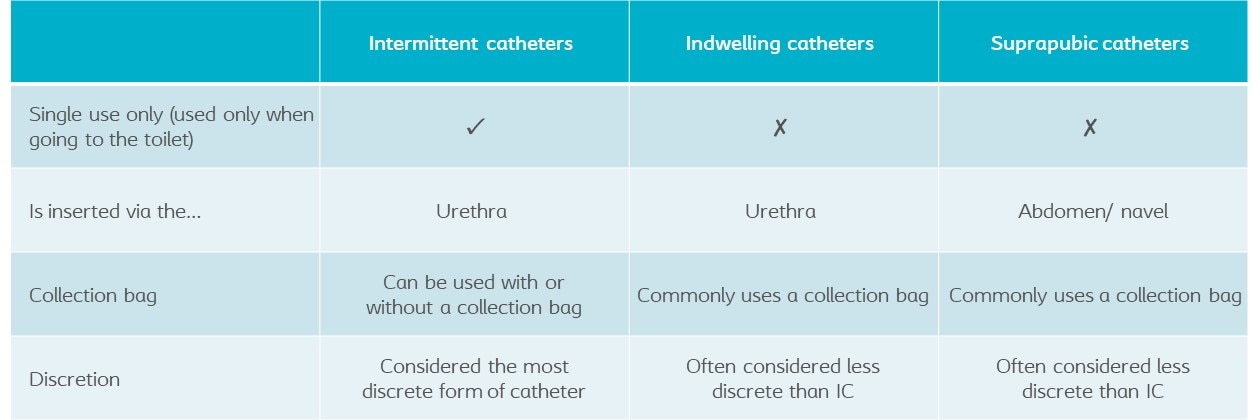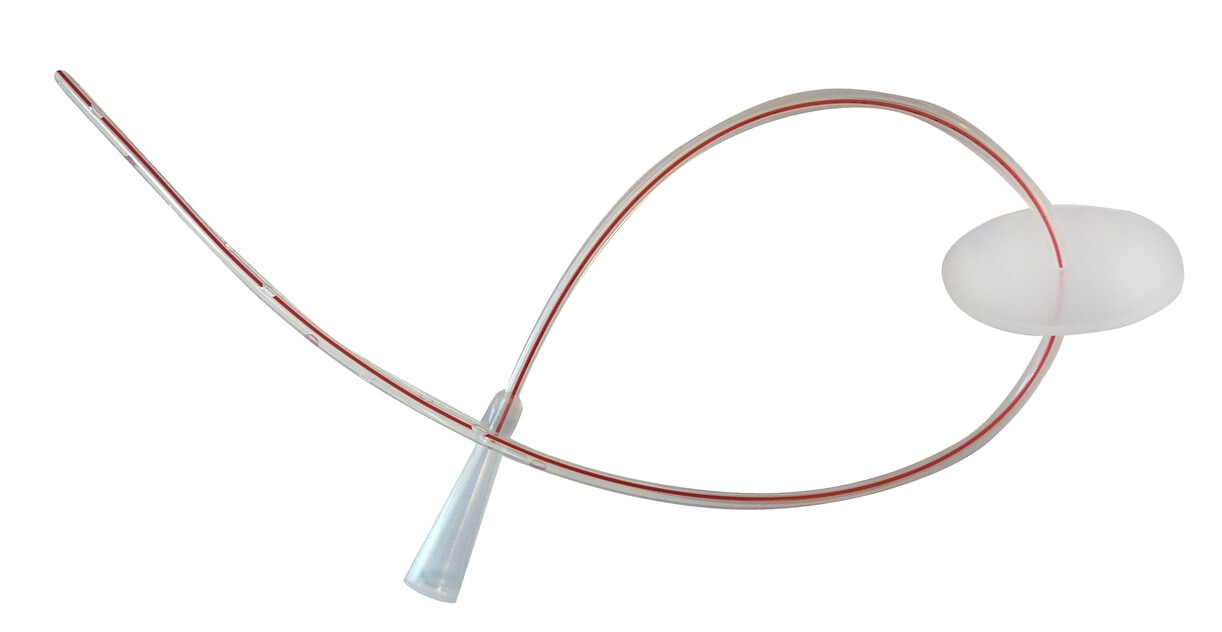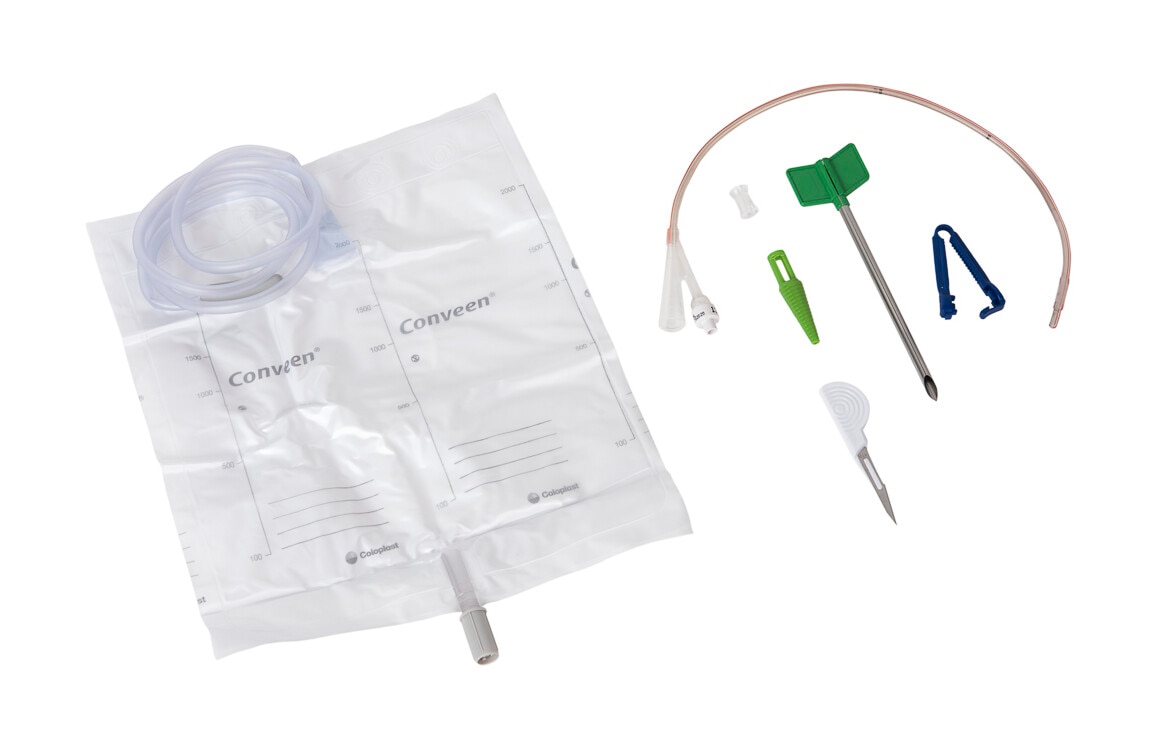
Understand the different types of catheters
Urinary catheters are sometimes necessary when someone cannot naturally empty their bladder. A urinary catheter is a hollow tube which is inserted through the urethra and is used to drain urine from the bladder.

“Using an intermittent catheter has improved my self-confidence.”
– Fabiola, 27

There are several different types of urinary catheter, which are inserted and used in different ways. The chart (you can find it also below) summaries the differences between intermittent, indwelling, and suprapubic catheters. Your doctor will work together with you to find a solution that fits your needs.
Intermittent catheters
Intermittent catheters are often recommended. These types of catheters should be used 4-6 times a day, just long enough to drain your bladder, and then removed. This makes intermittent catheterisation the preferred method of bladder emptying as it is the closest you can get to normal bladder functioning: your bladder still stores urine as normal and you pass urine when you need to and when it fits your schedule, with the help of the catheter.
You can be taught how to insert the catheter yourself. The catheter is a sterile instrument and is normally pre-lubricated, reducing the risk of any discomfort when you insert it. Using intermittent catheters should not hurt, and it is not harmful to your bladder, in fact, using an intermittent catheter is beneficial if you have problems voiding yourself naturally.
I had so much anxiety about all this and the things I had to do. But everything turned out to be incredibly easy. So the best advice I can give to people who start self-catheterising is don’t be afraid. Take the plunge. Because this is really going to change your life.
Eva, 33, living with MS

Indwelling catheters
Indwelling urinary catheters are also inserted via the urethra. The key difference is that indwelling catheters are left in place. A small water-filled balloon holds the catheter in place and prevents it from dropping out. Unlike intermittent catheters, indwelling catheters are fitted by a healthcare practitioner. Indwelling catheters usually need to be changed at least every 3 months and may be suggested as a treatment if a person is no longer able to self-catheterise.
As the catheter remains in place, it continually drains the bladder. This means that a collection bag is needed to hold the urine that is drained. The collection bag can either be strapped to the inside of the leg or attached to a stand on the floor.
Some indwelling catheters can also be fitted with a valve. When closed, it allows the bladder to fill with urine as normal, and when opened, the urine can then be drained into a toilet.

Suprapubic catheters
A suprapubic catheter is another type of catheter that is left in place over a longer time, usually being changed every 1-3 months. Rather than being inserted up through the urethra, suprapubic catheters are inserted via a small hole in the abdomen and then directly into the bladder.
A suprapubic catheter would be needed if the urethra was blocked or otherwise damaged, or when the person was unable to use an intermittent catheter. Just like indwelling catheters, a collection bag or valve is used to control how the urine is drained from the bladder.
